Finding the Best Wheelchair for Heavy Person Ultimate Guide in 2024 Ultimate Guide to Choosing the Best Wheelchair for Heavy Person in 2024
Posted by Tom Lee on
Choosing the right wheelchair for a heavier person can be a challenge. There are many options, and finding one that meets your needs is important. This guide will help make that decision easier.
We’ll cover the different types of wheelchairs available, from standard manual chairs to heavy-duty bariatric models. You’ll learn key features like weight capacity, frame durability, seat sizes, and mobility. Comfort, support, and safety factors will also be explained.
Whether you need a wheelchair or are selecting one for a loved one, this guide helps you pick the suitable option. The perfect wheelchair allows for independence while providing a safe, comfortable mobility solution for larger individuals.
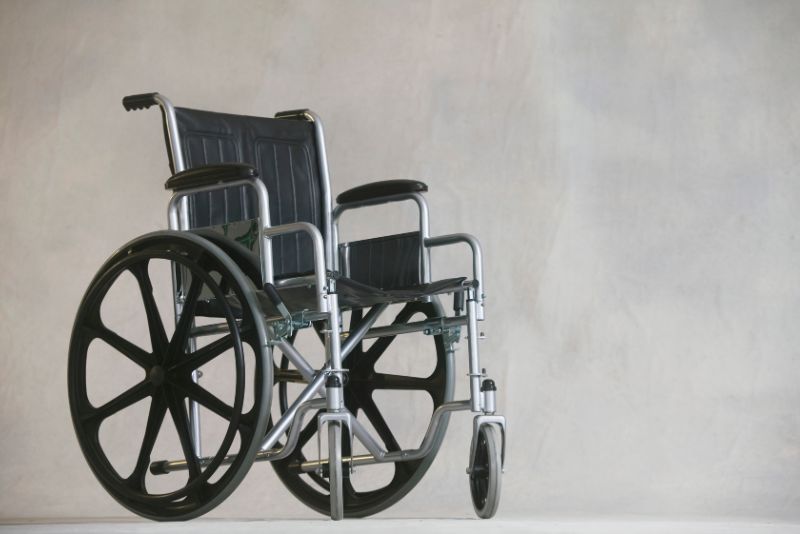
Key Takeaways
- When selecting a wheelchair for a heavy person, it is important to consider the weight capacity, comfort and support, mobility and maneuverability, safety and security, and accessibility and convenience features.
- Different types of wheelchairs are available, including manual, power, transport, and bariatric wheelchairs.
- Finding the right wheelchair for a heavy person can be challenging, but understanding the key features and types of wheelchairs available can help make the decision easier.
Understanding Wheelchair Types
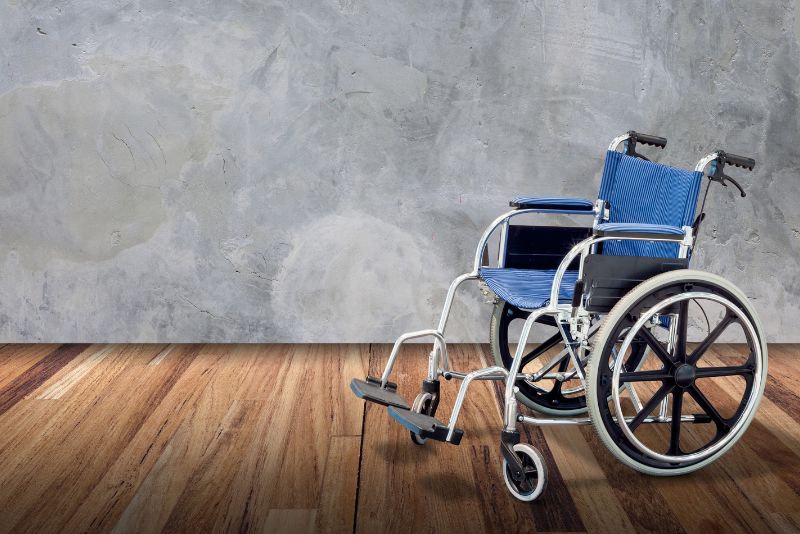
When choosing the best wheelchair for a heavy person, it’s important to understand the different types of wheelchairs available. There are two main categories of wheelchairs: manual and electric. Within these categories, different types of wheelchairs cater to specific needs.
Standard Wheelchair vs. Bariatric Wheelchair
Standard wheelchairs are designed for individuals who weigh up to 250 pounds. These wheelchairs are lightweight and easy to maneuver, making them ideal for daily use. However, for individuals who weigh more than 250 pounds, a standard wheelchair may not provide the necessary support and stability.
Bariatric wheelchairs, on the other hand, are designed for individuals who weigh more than 250 pounds. These wheelchairs have a reinforced frame and wider seats to accommodate larger individuals. Bariatric wheelchairs can support up to 700 pounds, making them ideal for heavy people.
Manual Wheelchairs vs. Electric Wheelchairs
The user or a caregiver propels manual wheelchairs. These wheelchairs are lightweight and easy to transport, making them ideal for travel. Manual wheelchairs are available in different styles, including standard, transport, and lightweight.
Electric wheelchairs, also known as power wheelchairs, are propelled by a battery-powered motor. These wheelchairs are ideal for individuals with limited upper body strength or mobility. Electric wheelchairs are available in different styles, including standard, travel, and heavy-duty.
Whether you want a manual wheelchair or an electric wheelchair, it’s important to consider the user’s needs and preferences. Manual wheelchairs are more affordable and require less maintenance, while electric wheelchairs offer greater independence and ease of use.
To sum up, choosing the best wheelchair for a heavy person requires careful consideration of the individual’s needs and preferences. Standard wheelchairs may not provide the necessary support for heavy individuals, while bariatric wheelchairs offer greater stability and support. Manual wheelchairs are lightweight and easy to transport, while electric wheelchairs offer greater independence and ease of use.
Key Features of Best Wheelchair for Heavy Person

Choosing a wheelchair for a heavy person has several key features to consider. These features can help ensure the wheelchair is comfortable, safe, and durable. Below are some of the most important features to look for when choosing a wheelchair for a heavy person.
Seat Widths and Sizes
One of the most important features to consider when selecting a wheelchair for a heavy person is the seat width. A wider seat can help provide more comfort and support for the user. Some wheelchairs have seat width options, allowing you to choose the best size.
The seat width in heavy-duty wheelchairs typically ranges from 16 inches for narrower adults to 20 inches for most adults. However, those requiring a bariatric model can find widths up to 30 inches. Assessing the correct seat size starts with measuring the user’s hip width in a straight line and adding approximately two inches for adequate space and comfort. A smaller bariatric wheelchair starts around 22 inches in seat width, with larger models available up to 36 inches to suit a variety of users.
Moreover, heavy-duty wheelchairs are designed with seat dimensions that support the larger seat widths, having a general width range of 28 to 33 inches compared to the standard 25-inch width found in regular wheelchairs. Such measurements are crucial not only for user comfort but also for the structural integrity of the wheelchair itself.
Weight Capacities and Limits
Another important consideration is the weight capacity of the wheelchair. Regular wheelchairs usually hold up to 200-250 pounds.
However, people who weigh over 350 pounds need a special category of wheelchairs called heavy-duty or bariatric wheelchairs.
These wheelchairs are designed to accommodate users who weigh more than the typical weight limit of a standard wheelchair. When selecting a wheelchair, it is important to check the weight limit to ensure it can safely support the user’s weight.
Frame Materials and Durability
The frame of the wheelchair is also an important consideration. Heavy duty wheelchairs often feature a steel or carbon steel frame, which is known for their durability and strength. Lightweight frame options are also available but may not be as sturdy as heavier options.
When selecting a wheelchair for a heavy person, it is important to consider the seat width, weight capacity, and frame materials to ensure the wheelchair is comfortable, safe, and durable. Considering these factors, you can find the best wheelchair for your needs.
Comfort and Support Considerations
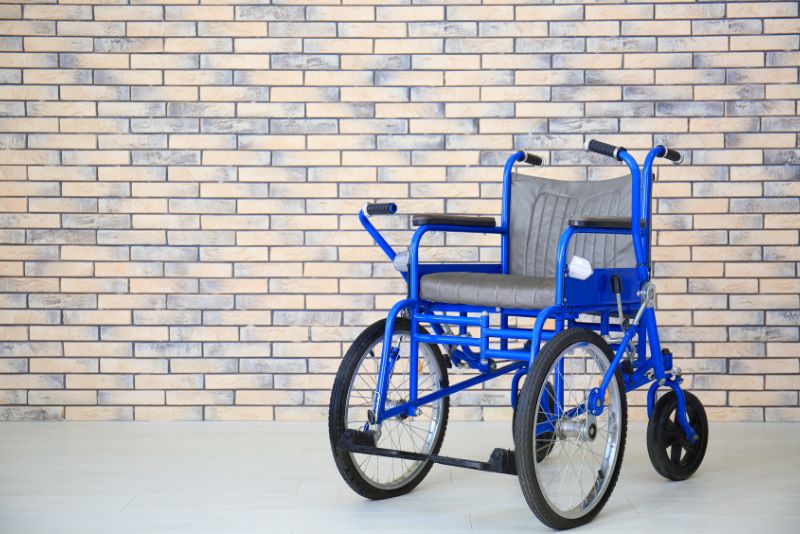
When looking for the best wheelchair for a heavy person, comfort and support are crucial factors. A comfortable wheelchair can help reduce the risk of pressure sores, improve posture, and increase overall mobility.
Seat Comfort and Height
The seat height should be appropriate for the user’s height to provide maximum comfort and support. A higher seat height can make it easier for the user to transfer in and out of the wheelchair, while a lower seat height can improve stability and reduce the risk of tipping. The seat should also be wide enough to comfortably accommodate the user’s body.
Typically, an average wheelchair seat height is around 19 inches, but for larger or heavier individuals, a seat height between 17.5″ to 19.5″ is more suitable.
Some wheelchairs feature gusseted sides that provide additional support and help distribute weight evenly. A larger frame can also provide more stability and support for heavier users.
Weight Distribution and Support
Weight distribution is another important consideration when choosing a wheelchair for a heavy person. A well-designed wheelchair should distribute weight evenly to reduce pressure on the user’s back, hips, and legs.
A wheelchair with a wide seat and larger frame can provide more space for the user to shift their weight and adjust their position. Some wheelchairs also feature adjustable footrests and armrests that can help improve weight distribution and overall comfort.
Additional Comfort Features
Additional comfort features can also significantly impact the user’s overall experience. For example, a wheelchair with a reclining backrest can provide more support and reduce pressure on the user’s spine.
A wheelchair with a padded seat and backrest can also help reduce the risk of pressure sores, while a wheelchair with adjustable tension upholstery can provide a more customized fit for the user.
Overall, when choosing the best wheelchair for a heavy person, it’s important to consider the user’s individual needs and preferences. A comfortable and supportive wheelchair can help improve mobility and overall quality of life.
Mobility and Maneuverability

Regarding mobility and maneuverability, the type and size of the wheels are crucial factors to consider. Heavy-duty wheelchairs often come with larger rear wheels, which provide better traction and stability on different terrains. For instance, the Jazzy Elite HD Power Wheelchair, which is designed for heavy people, has 14-inch rear wheels that can handle up to 450 pounds.
Wheel Types and Sizes
Another important factor to consider is the type of wheels. Some wheelchairs come with pop-off wheels, making transporting and storing the chair easier. Anti-tippers are another feature to look for, as they provide additional stability and prevent the chair from tipping over backward.
Ease of Propulsion
Ease of propulsion is another crucial factor to consider. Lightweight wheelchairs are easier to push and maneuver, which is especially important for caregivers and users who need to move around frequently. The ET300C Lightweight Folding Wheelchair is a great example of a lightweight wheelchair that is easy to maneuver.
Turning Radius and Navigation
Lastly, turning radius and navigation are important factors, especially if the user needs to maneuver through tight spaces. The Medline Lightweight Wheelchair has a tight turning radius, making navigating through narrow doorways and hallways easy.
Overall, it is important to consider the type and size of the wheels, ease of propulsion, and turning radius and navigation when it comes to mobility and maneuverability. By taking these factors into consideration, users can choose a wheelchair that is both comfortable and easy to use.
Safety and Security Features
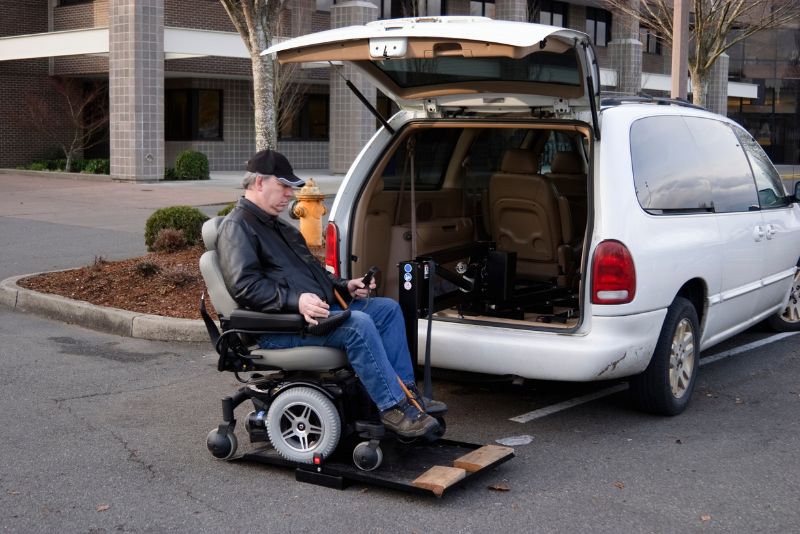
When choosing a wheelchair for a heavy person, safety and security features are of utmost importance. The following subsections detail some key features of a heavy-duty wheelchair.
Braking Systems and Anti-Tippers
Braking systems are essential for a wheelchair, and heavy-duty wheelchairs require stronger brakes to ensure the user’s safety. Anti-tippers are also important for preventing the wheelchair from tipping backward. These features are especially important for heavy individuals who require more force to stop the wheelchair or maintain balance.
Seat Belts and Restraints
Seat belts and other restraints are critical safety features for heavy-duty wheelchairs. A properly fitted seat belt can help prevent the user from falling out of the wheelchair or being thrown forward in a sudden stop or collision. Restraints can also help to keep the user in a comfortable and secure position while in the wheelchair.
Stability and Balance
Heavy-duty wheelchairs should be designed with stability and balance in mind. This means that the wheelchair should support the user’s weight without tipping over, and the wheels should be large enough to provide a smooth and stable ride. Additionally, the wheelchair should be designed to distribute the user’s weight evenly to prevent pressure sores and other health issues.
Heavy-duty wheelchairs should be equipped with various safety and security features to ensure the user’s comfort and well-being. When shopping for a wheelchair, it is important to carefully consider these features to find the best fit for the user’s needs.
Accessibility and Convenience
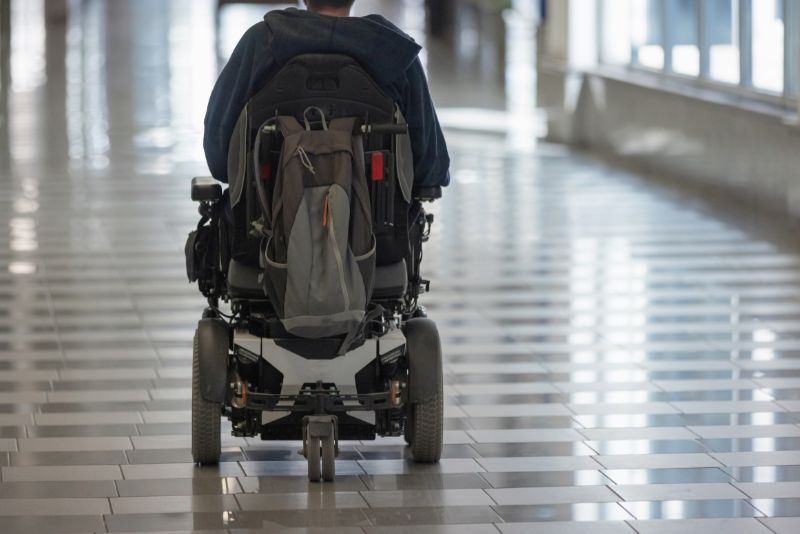
For a heavy person, accessibility and convenience are crucial factors when choosing a wheelchair. The following subsections highlight some important features that can make a wheelchair more accessible and convenient for a heavy person.
Removable and Swing-Away Components
Many wheelchairs come with removable and swing-away components, such as footrests and armrests. This feature makes it easier for a heavy person to transfer in and out of the wheelchair and for caregivers to assist with transfers. The ET305 High Back Reclining Wheelchair is an example of a wheelchair with removable footrests and swing-away armrests.
Portability and Storage
Portability and storage are also important considerations for a heavy person who needs a wheelchair. A heavy-duty folding frame can make it easier to transport the wheelchair in a car or on public transportation. The ET310B Folding Wheelchair is an example of a lightweight, foldable wheelchair that is easy to transport and store.
Adjustable and Detachable Parts
Adjustable and detachable parts can also enhance the accessibility and convenience of a wheelchair for a heavy person. For example, a wheelchair with an adjustable seat width can accommodate a wider range of body types. The DGN5001 All-Terrain Electric Wheelchair is an example of a wheelchair with adjustable seat width.
Choosing the Right Wheelchair

When choosing the right wheelchair for a larger individual, there are a few factors to consider. Here are some important things to keep in mind:
Assessment of User Needs
Before making a purchase, it’s important to assess the user’s needs. This includes taking measurements to ensure the wheelchair is the right size and considering any specific health concerns or mobility issues the user may have. It’s also important to think about where the wheelchair will be used, whether it’s primarily indoors or outdoors, and if it needs to be easily transportable.
Comparing Brands and Models
There are many different brands and models of wheelchairs for sale, so it’s important to compare options carefully. Drive Medical is one popular brand that offers a range of regular wheelchairs, extra wide wheelchairs, and lift chairs. Consider weight capacity, ease of use, and durability factors when comparing different models.
Considering the Cost and Value
Wheelchairs can be a significant investment, so it’s important to consider the cost and value of different options. While choosing the cheapest option available may be tempting, balancing cost with quality and value is important. Look for a wheelchair with the features and functionality needed while still fitting within the budget.
Overall, choosing the right wheelchair for a larger individual can be a complex process. Still, by taking the time to assess needs, compare options, and consider cost and value, it’s possible to find a wheelchair that meets the user’s needs and provides reliable, comfortable mobility.

